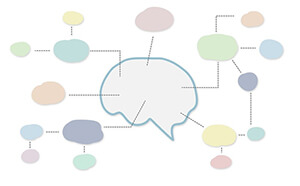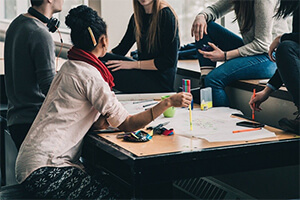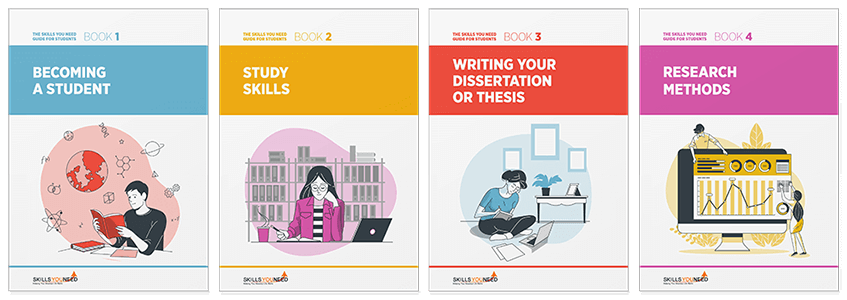4 Learning Techniques
That Are Perfect for Creative Minds
Take our: Creative Thinking Skills Self-Assessment
It doesn’t matter what you want to learn - whether it’s developing personal skills, building leadership skills, or anything else - the foundation of all learning is understanding how to absorb information.
Finding the Right Learning Techniques for You
The ultimate goal of any learning endeavour should be to trigger the brain’s automation processing function, the inherent biological system by which the mind responds naturally to stimuli.
For example, once you have learnt to drive, your mind and your body both instinctively know how to drive a car: you don’t need to run through the basics every time you head off on your morning commute. But you do need to absorb this information initially, and this process can be made much easier if you find the right learning techniques for you.
The truth is that there’s an almost never-ending list of ways to learn. Some people respond well to ‘parrot learning’; the act of learning through copying. Others use retrieval methods - reading information and recalling it later - while some choose a memorisation approach, which involves remembering key words and phrases to understand a particular concept. These techniques can all be incredibly useful for many people but, for those with creative minds, they can sometimes prove to be a little too restrictive.
Learning for Creative Minds
Creative minds require creative experiences. They don’t always respond well to static facts and figures, and instead need the freedom to learn practical skills in inventive ways. And while it may sound strange, creative learning really is the fundamental learning technique that children use to understand the world around them: they paint pictures of their family to learn about support networks; they build structures out of blocks to learn about dimensions… Creative learning is one of the most natural methods out there.
And believe it or not, anything can be learned through creative techniques. In fact, the United National International Academy of Education believes that ‘all subjects are creative and can be taught and learnt creatively’. So what are the four best learning methods that creative minds can use to develop their skills?
Let’s take a look…
1. Mind Mapping

Also known as a ‘concept map’, a mind map is a visual representation of ideas that are all related - in one way or another - to the specific skill or information you’re attempting to learn. While they may look complicated, they’re a way for creative minds to connect the dots between all the different thoughts that emerge from the learning content, highlighting the various relationships, the similarities, and the differences between concepts.
Creative minds have a tendency to consider the bigger picture, and how this big picture influences the smaller topic at hand, which is what makes this tactic so perfect for those who fall on the creative end of the spectrum. Mind mapping is a form of visual learning, and with reports suggesting that 65% of the population are visual learners, a mind map can really help skill development.
2. Brain Sketching

Brain sketching is closely related to mind mapping, and it’s a rather unusual term for what can be a highly effective learning technique for creative minds. For minds that absorb visual information more easily than textual data, creating visual representations of this data through brain sketching can be hugely beneficial.
While mind mapping is about exploring associated ideas, brain sketching is more about transforming the core information into imagery. It involves simply taking the information, and transferring it into visual form. These images can often be simpler to recall than sheets and sheets of textual information, and sketches can be added to over time as skills develop and expand, as the subject matter is delved into more deeply, and as knowledge and understanding of the concept begins to widen.
3. Self Explanation & Elaborative Interrogation

Self explanation and elaborative interrogation are two different concepts, but they’re very closely related. Self explanation is almost like the art of storytelling, a firm favourite of many creative minds. It encourages learners to take the information they have and reimagine and reinvent it, explaining it in a completely different way that still comprehensively covers the subject. Ultimately, this learning technique is about finding different journeys to the same destination.
Elaborative interrogation is often a natural part of self explanation. It involves asking questions of yourself - questions that you haven’t yet found in your learning resources - and coming up with answers to those questions. Together, these techniques allow the mind to work creatively to work through information and better understand it.
4. Collaborative Learning

While creative minds may think it’s better to learn independently, adopting a collaborative learning technique and working alongside a partner may be the secret to success. Why? Because creativity cannot thrive alone; creative minds work best when they’re inspired by new ideas, and when they can see different perspectives.
Brainstorming allows for two creative minds to come together to look at concepts in ways that neither would have thought to alone. It’s an opportunity to bounce ideas off each other, question each other, and answer each other; to generate a back and forth - a to and fro - that forces creative minds to consider a variety of perspectives and opinions surrounding a single idea. This method can help to give more of a 3D shape to a 2D concept, adding substance to a seemingly flat idea.
Further Reading from Skills You Need
The Skills You Need Guide for Students

Develop the skills you need to make the most of your time as a student.
Our eBooks are ideal for students at all stages of education, school, college and university. They are full of easy-to-follow practical information that will help you to learn more effectively and get better grades.
The Common Factor
While all four of these learning techniques are different, they all have one thing in common; they all offer the flexibility to shift outside of the traditional learning box and explore associated concepts that help to reinforce and back up the information. Studies have concluded that learning in non-standard ways - particularly outside the classroom, or through play and games - is vitally important for children. So why are we overlooking this as adults? For creative minds, creative learning techniques really are the best ways to learn, understand, grow, develop, and achieve your learning goals, whatever they may be.
About the Author

Silvana Carpineanu is an enthusiast Marketing Specialist who works for mindomo.com. Driven by passion and creativity, she's responsible for copywriting, advertising, SEO, and content creation. She does all of this knowing that for every minute spent organizing, an hour is earned.

